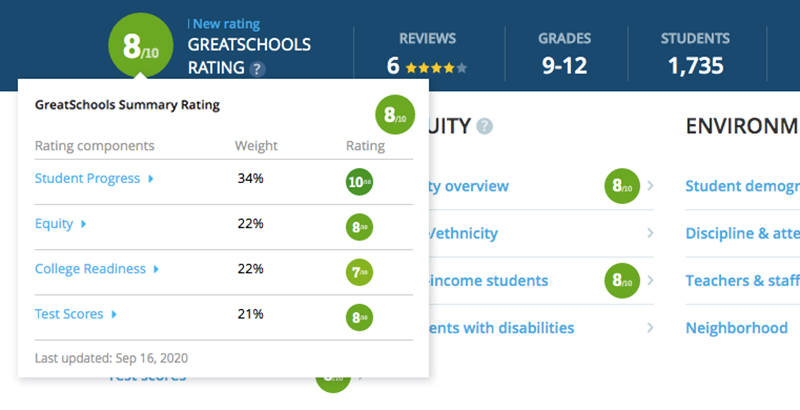Deane: To Help Parents Better Understand Their Children’s Schools, Student Growth Is Now Key in Our GreatSchools Ratings

This year, parents’ lens on education has radically changed. Many school buildings are empty while their students sit at the kitchen table, learning on video screens. Some children have returned to school, bringing home anecdotes about masks and socially distant lunch lines. More than ever, parents can see clearly what their children need academically and socially in order to learn.
Parents have always expressed a desire for more information about their children’s schools, but this year has revealed just how vital the data are. While this moment has enabled parents to zoom in on their child’s individual learning during remote classes, when they zoom out and look at a school as a whole, a clear picture still may elude them. How can they know what makes their child’s school successful? Why might it be a good place for their child? How would they know if the school is effectively supporting all its students and thereby strengthening the entire community?
The challenge of gathering information that paints an accurate picture of the nation’s schools is not new. For years, teachers, principals, superintendents and policymakers have used a broad set of measures and data to improve learning, but point-in-time test scores have remained the primary means by which we, as a society, measure school success. No Child Left Behind’s mandated use of standardized test scores unleashed a mounting body of evidence showing the limits of using proficiency scores to judge a school’s effectiveness, chief among them their high correlation with a student’s socioeconomic background.
Test scores tell us if students are or aren’t proficient — an important barometer at both an individual and a school level — but they never tell the whole story of what’s happening in a school. For many years, however, test scores remained the only widely available data point for all public schools in the nation.
The Every Student Succeeds Act attempted to mitigate the problems of NCLB without throwing out test scores altogether. Schools would be required to offer multiple measures of success, including growth — the academic progress a student has made in a year. By the time the new reporting requirements kicked in in 2018, many schools, districts and states had begun to use multiple measures to improve practices, student outcomes and interventions, often with a focus on supporting disadvantaged students. The adoption of both growth data and disaggregated data for different groups of disadvantaged students was a huge step forward. Measuring student learning over time and focusing on underserved students groups offered a far more accurate picture of school effectiveness. Still, ESSA’s patchwork approach meant that this information was not widely available for all schools, and where it was, parents often struggled to understand it.
That’s why we’re excited to make a major change to how we calculate our GreatSchools ratings to focus on the core purpose of a school: learning. Drawing on expert advice from organizations working with parents, civil rights groups and academics, our ratings for every public school in the country — district and charter — for which we have available data now emphasize growth over proficiency. By adding data about learning over time, equity and college readiness to high school equity measures, the information becomes richer and more nuanced. Ratings may rise or fall based on the new calculations, and it becomes clearer whether schools are doing a better job of serving all students. This is especially true in schools with a high percentage of low-income students or students of color; with the new methodology, their ratings are more likely to increase. We also help parents make sense of the changes to understand why a school’s rating may go up or go down and why growth is important.
Understanding growth and equity gaps are crucial to painting an accurate picture of school quality. But as most parents and researchers agree, there’s more we can do to help families understand what’s going on inside their community’s schools. That’s our North Star. We want to find information that allows us to go deeper into the inner workings of a school and get a sense of the health of interpersonal relationships, teacher satisfaction, safety measures, social and emotional skills, prevalence of bullying, family engagement and more. Across the country — from New York City to Illinois to the consortium of CORE districts in California — there are districts and states that have been leading the way in collecting new types of data and information from parents, teachers and students, and reporting the information along with growth, proficiency and other measures of school performance.
We need more states and districts to collect data that give families the tools to be partners in a meaningful conversation about their schools. If the pandemic has taught us anything about education, it’s that families need to be a more valued part of the learning team for a child and a truly valued stakeholder at a school.
Jon Deane is CEO of GreatSchools.org.
Get stories like these delivered straight to your inbox. Sign up for The 74 Newsletter

;)
